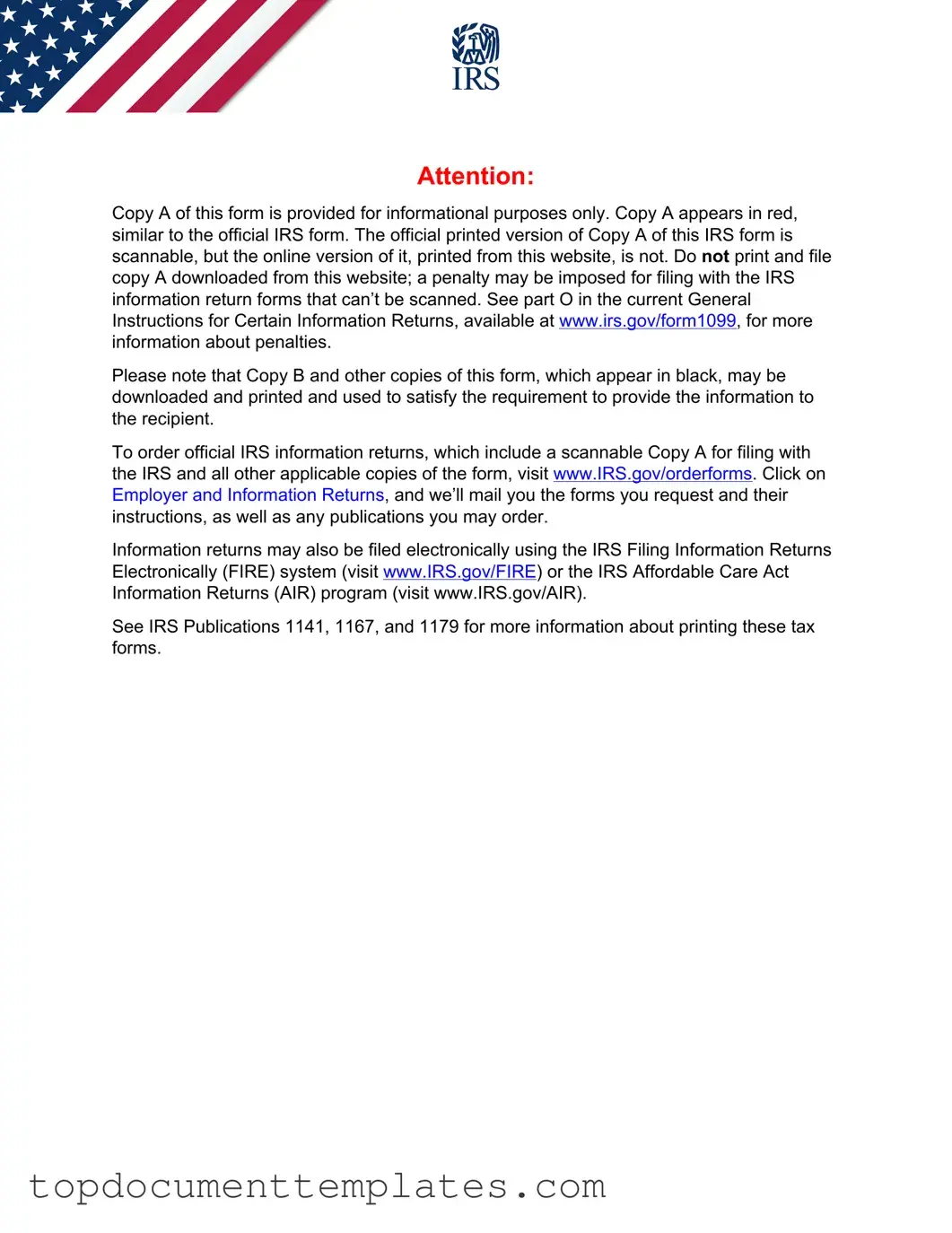The 1099-NEC form plays a crucial role in the landscape of tax reporting for nonemployee compensation in the United States. This form is primarily used to report payments made to independent contractors, freelancers, and other nonemployees who have received $600 or more in a calendar year. Unlike traditional employees, these individuals do not have taxes withheld from their payments, making the accurate reporting of their earnings essential for compliance with IRS regulations. The form features several key sections, including details about the payer and recipient, the total amount of nonemployee compensation, and any applicable federal or state tax withheld. It's important to note that there are specific copies of the form designated for different purposes; for instance, Copy A is meant for the IRS and must be printed in a scannable format, while Copies B and C can be printed in black and used for providing information to the recipient and for record-keeping, respectively. The IRS provides guidance on how to properly order and file these forms, whether electronically or by mail, ensuring that taxpayers can meet their obligations without incurring penalties. As tax season approaches, understanding the nuances of the 1099-NEC form becomes increasingly vital for both payers and recipients alike, as it directly impacts their financial reporting and tax liabilities.
